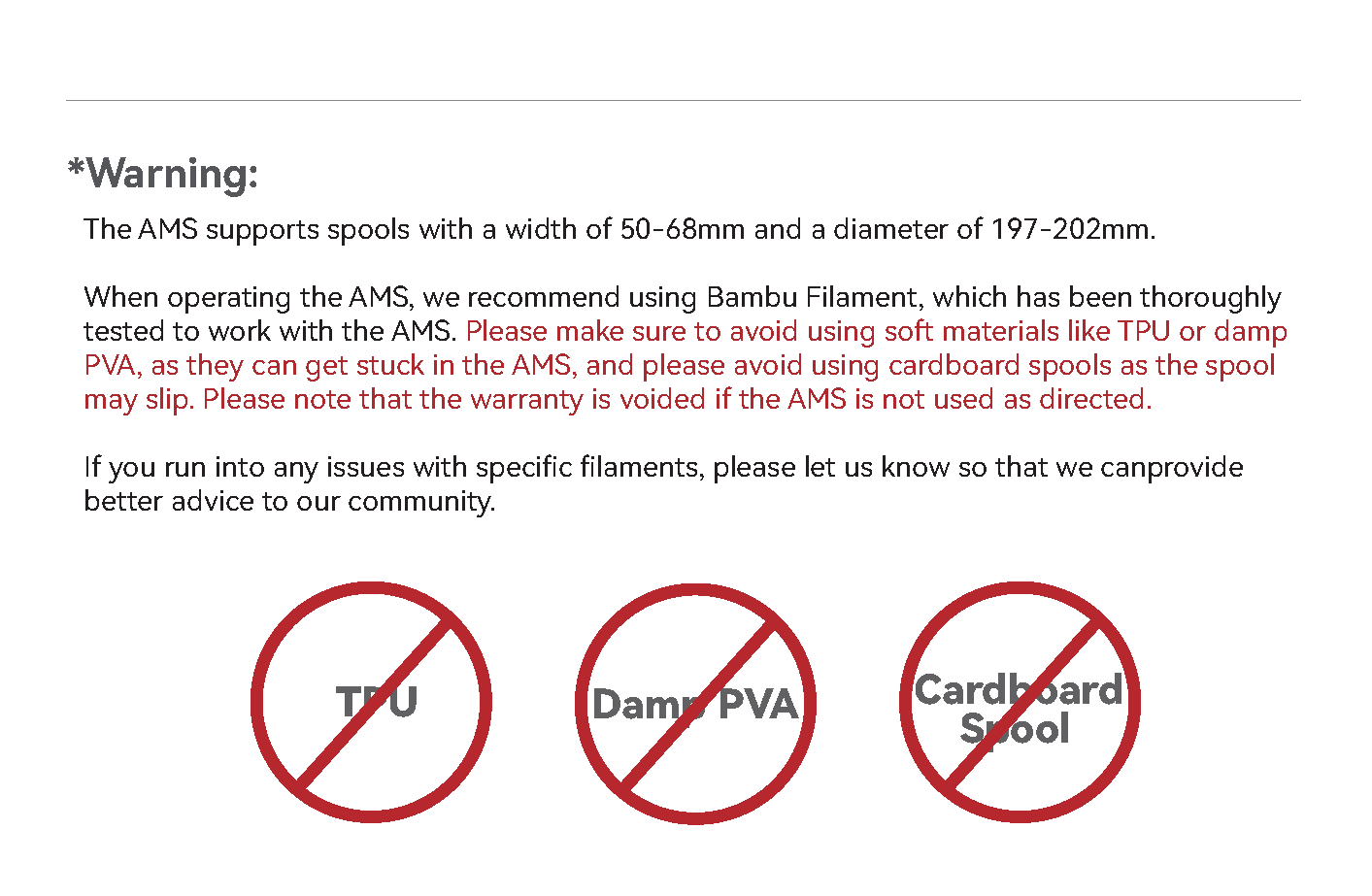We will introduce the main components of AMS (Automated Material System) so that you can have a general understanding of AMS and its working principle. In addition, when using AMS, please note that the ambient temperature must be maintained at 10-30 ℃ and the humidity must be less than 85%.
¶ How does AMS work?
The AMS consists of three major parts: a set of four Filament Slots, a Filaments Hub, and a Filament Buffer. Each Filament Slot has its own motor to actively push the filament forward or rewind it to the spool. The Filament Hub merges four filament paths into one and gives the filament a second-stage driving force with a brushless motor. The Filament Buffer is located at the back of the printer, which connects the AMS to the tool head extruder, in order to ensure the tension on the filament is within a given range so that the tool head extruder can work easily and precisely.
In total, there are 10 sensors integrated into the filament path, meticulously monitoring and controlling the position, speed, and tension of the filament.
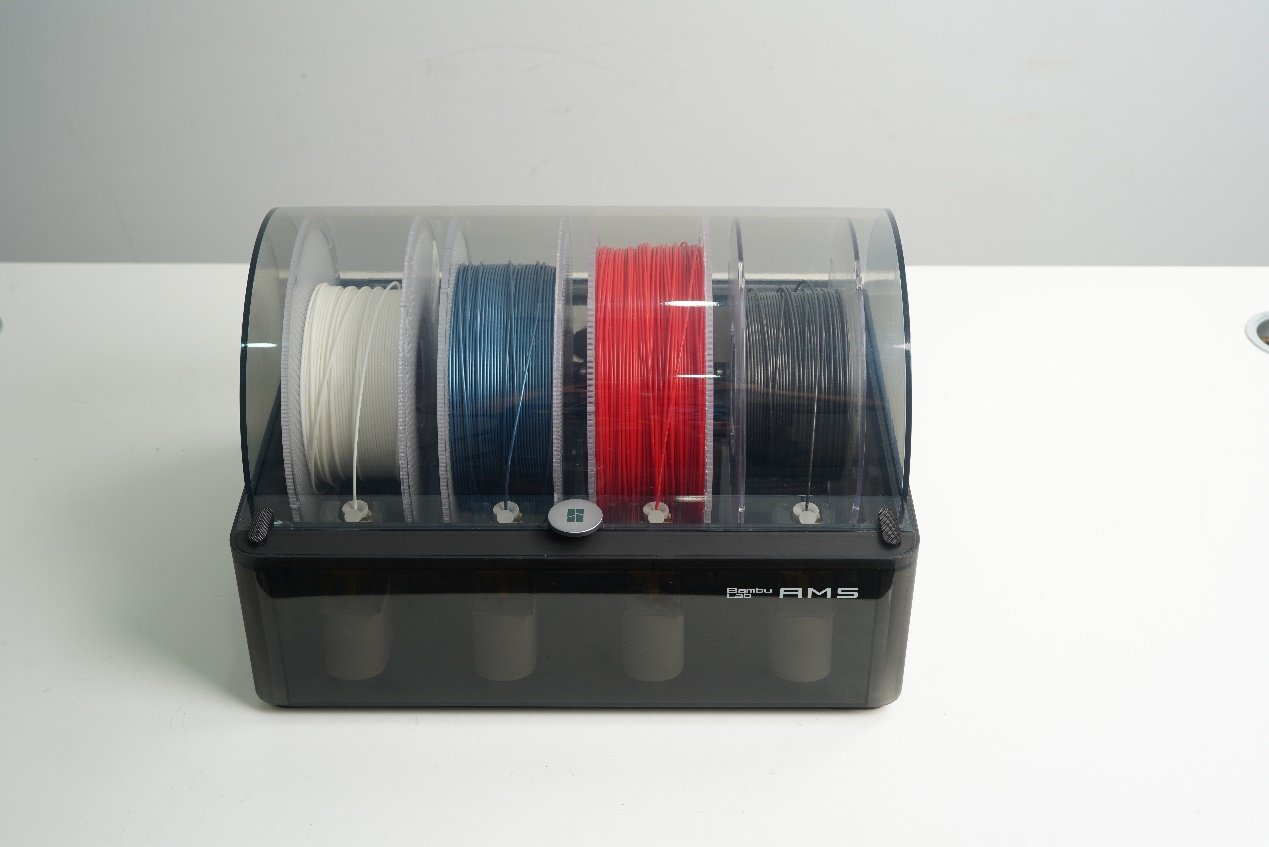 |
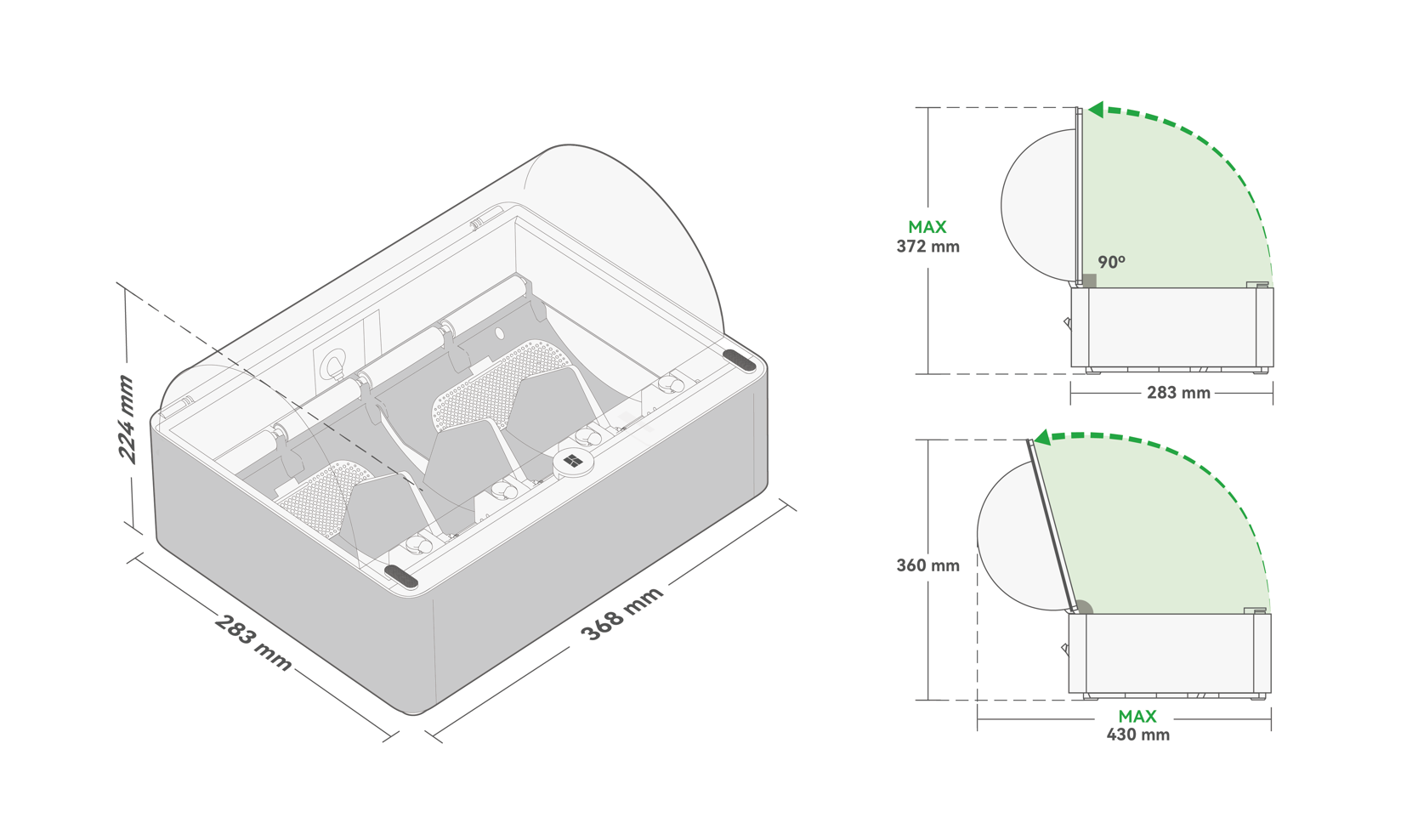 |
¶ Filament Slot
The AMS has 4 filament slots, each filament slot has its own motor and gears to actively push the filament forward or wind it back to the spool. Each filament slot also has a sensor to detect the filament, when a filament is inserted, it will pull the filament automatically. During this process, it pulls the filament just like an extruder. When it needs to wind the filament back, it also rotates the spool for filament winding.
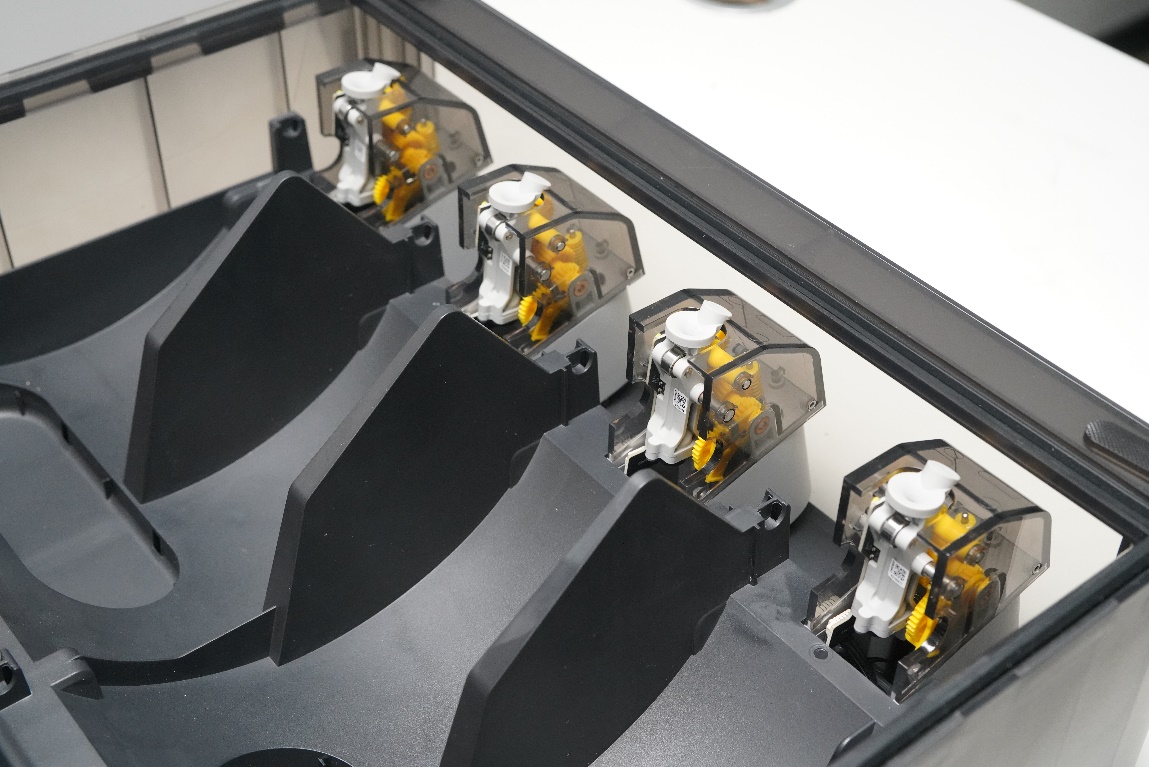
¶ Filaments Hub
The Filaments Hub is located at the bottom of AMS, it consists of four hall sensors, one magnetic rotary encoder, and one brushless motor. It merges four filament paths into one. The hall sensor detects when the filament has reached a specific location, which in turn activates the brushless motor to give the filament a second stage driving force.
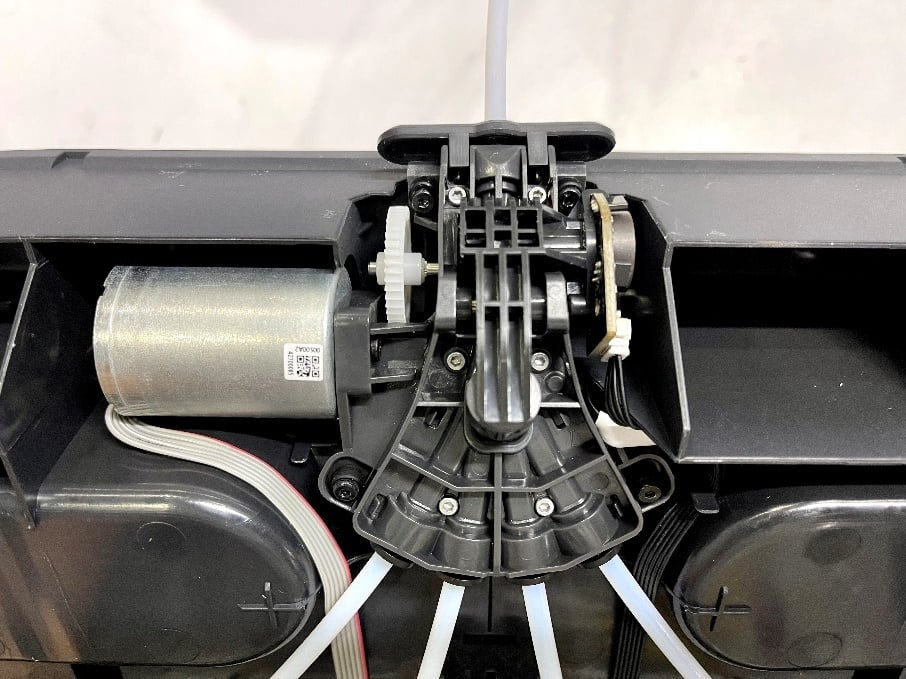
¶ Filament Buffer
The Filament Buffer is located at the back of the printer, connected to both the AMS and the toolhead extruder. It has a slide, a spring, and a hall sensor. When the AMS pushes the filament into the toolhead extruder, the slide will move forward due to the pressure of the filament. The hall sensor can then detect the displacement and location of the slide, and feedback that signal back to the AMS and the printer. By controlling the feed speed of the AMS, we can make sure the tension on the filament is within a given range so that the toolhead extruder can work easily and precisely, without adding too much or too little tension.
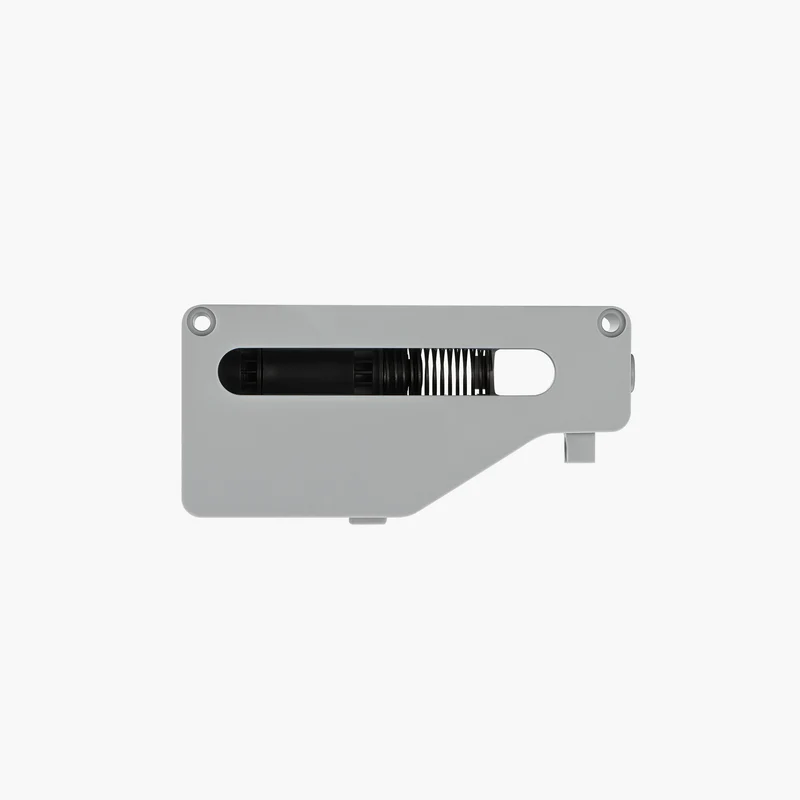
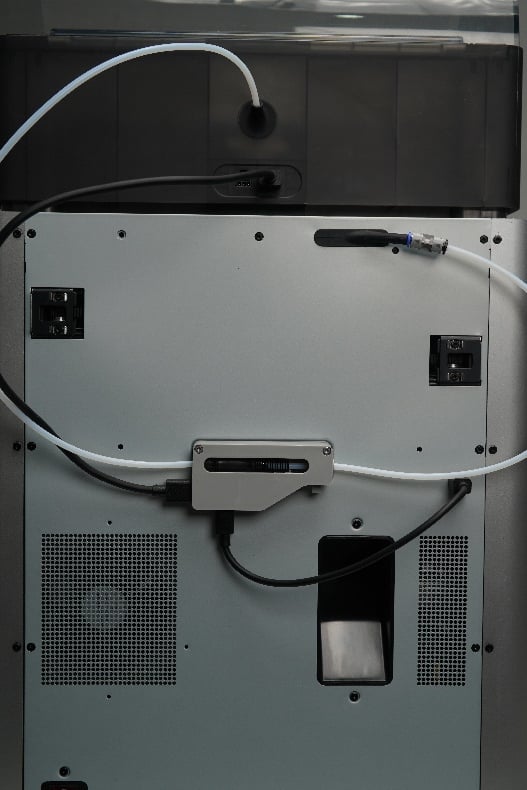
¶ AMS Hub
The AMS Hub replaces the filament Buffer. It allows the user to connect four AMS units, which in turn can supply 16 different filament spools to the printer. The AMS Hub is composed of a filament selection module and a buffer module. The filament selection module has four inlets to connect to four separate AMS units. Each slot has a hall sensor to detect the filament. The buffer module’s function is the same as it is with the standard filament buffer, it has a slide, a spring, and a hall sensor to make sure the tension on the filaments is within a given range.
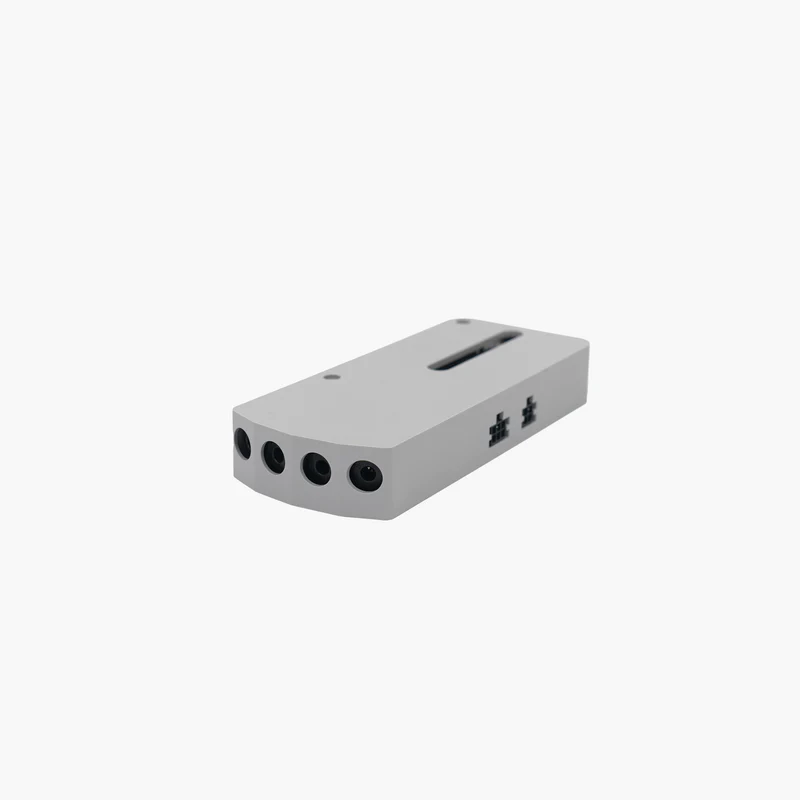
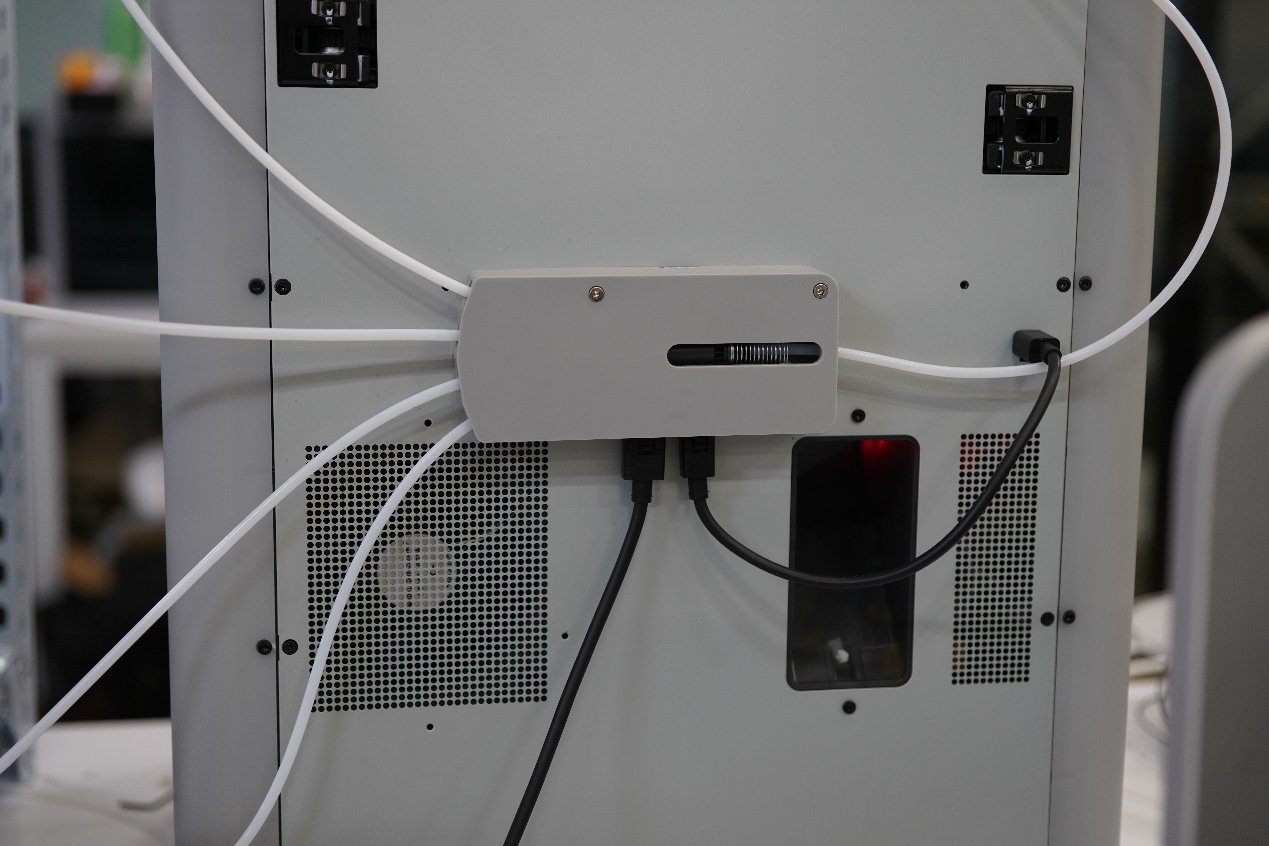
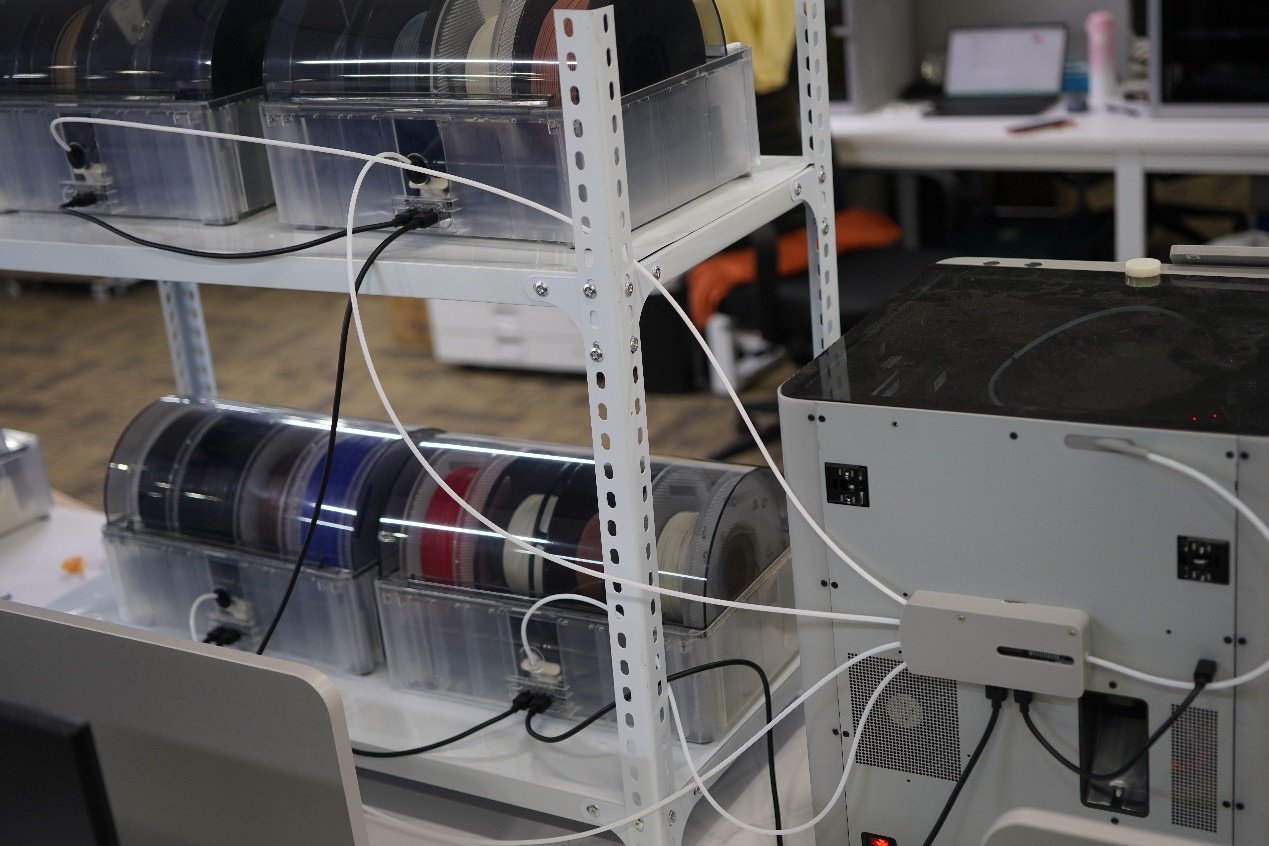
¶ RFID system
The RFID System can automatically identify the RFID tag on the Bambulab filament spools, which can then sync the filament information to the Bambulab slicer (Bambu Studio).
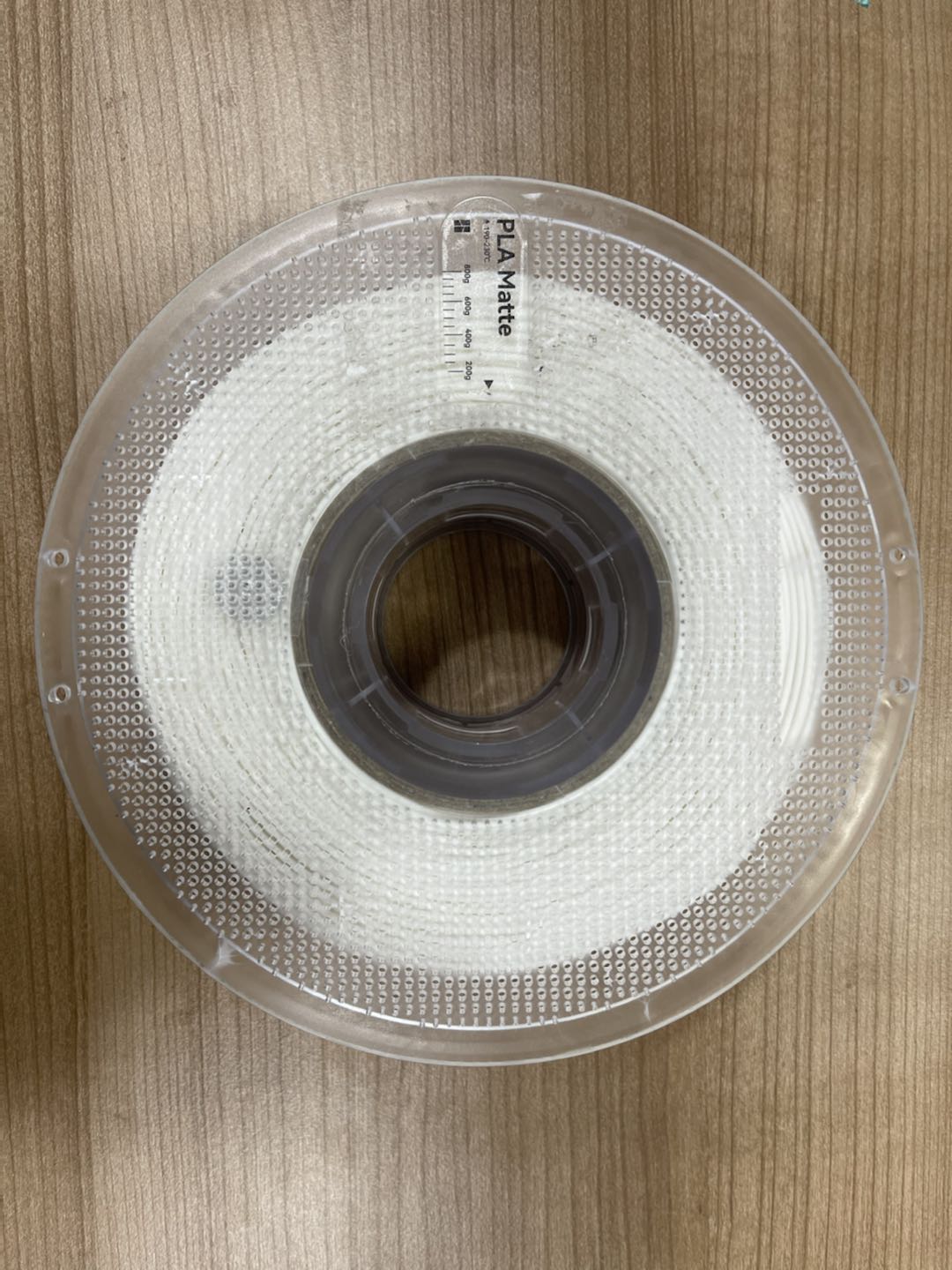
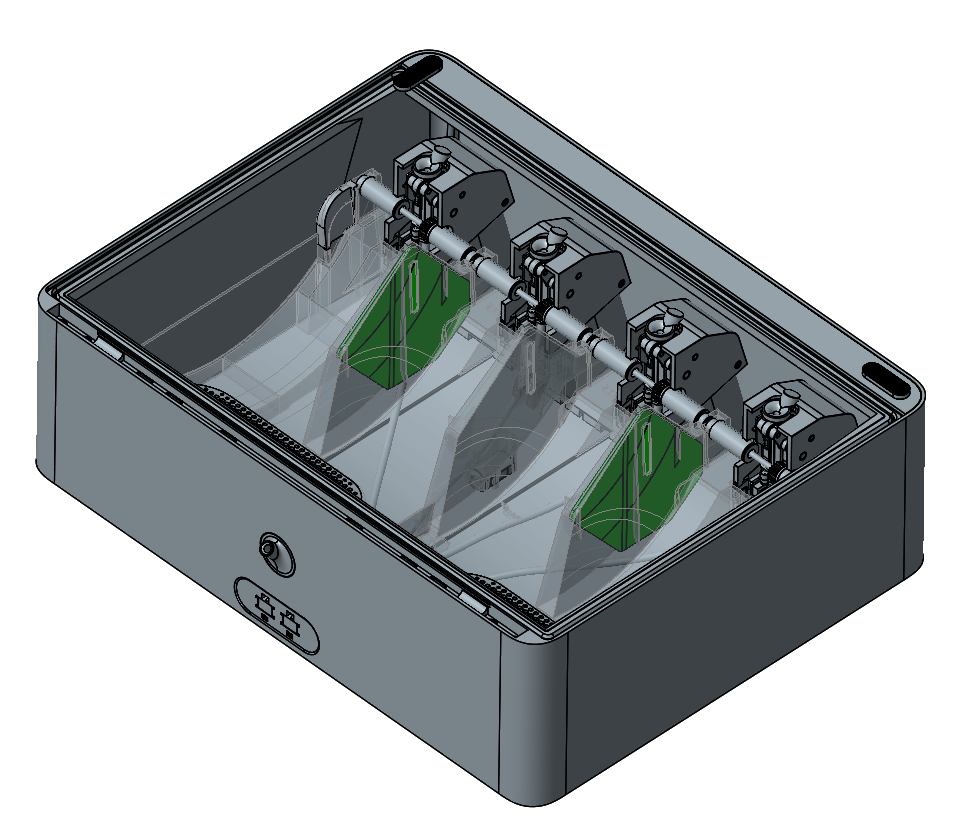
¶ Moisture-proof System
The Moisture-proof System consists of a humidity sensor, two packets of desiccant, and silicon rubber O-rings. The desiccant can absorb moisture to keep the air in the AMS dry. The silicon rubber O-rings are installed to make sure the AMS remains airtight in order to avoid ruining your hygroscopic filaments. When the air humidity exceeds the standard preset in the AMS, the humidity sensor [under development] will detect and remind the user to replace the desiccant bags.
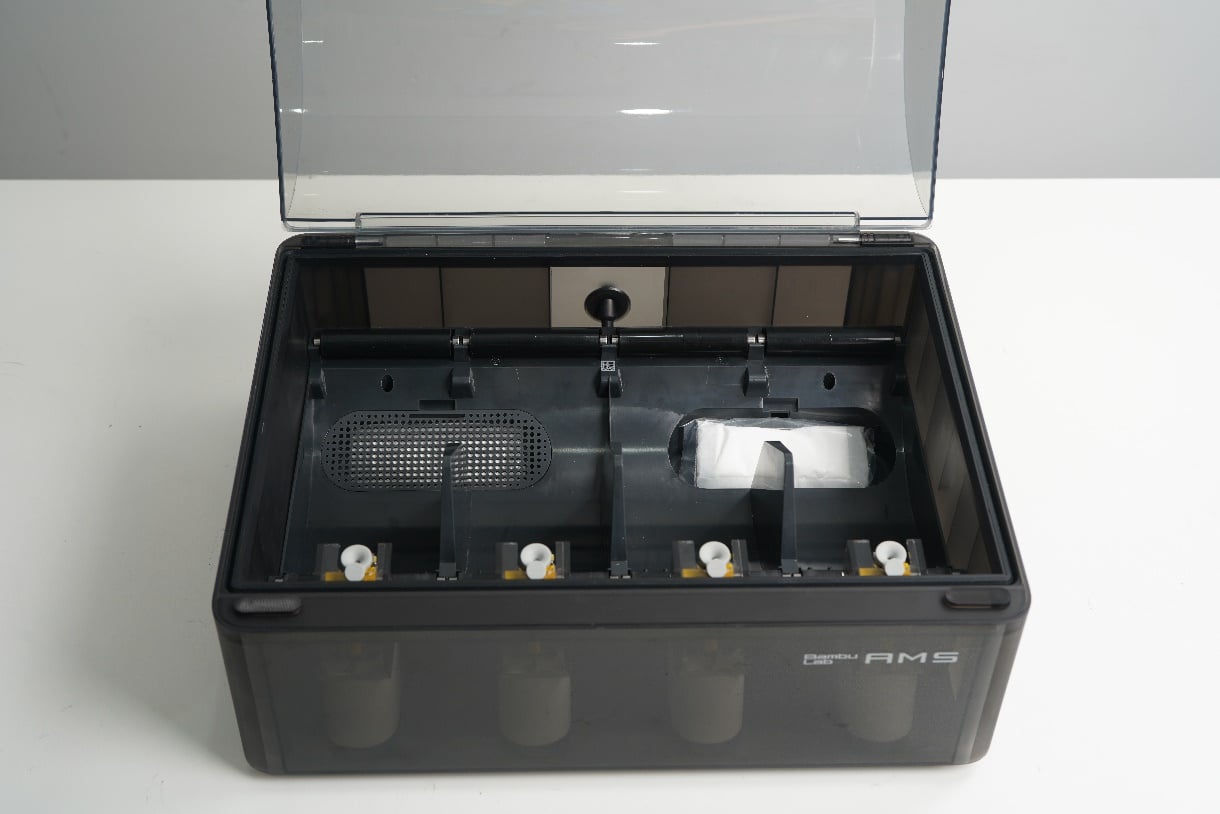
¶ Warnings
